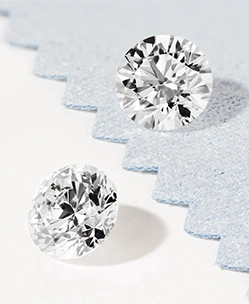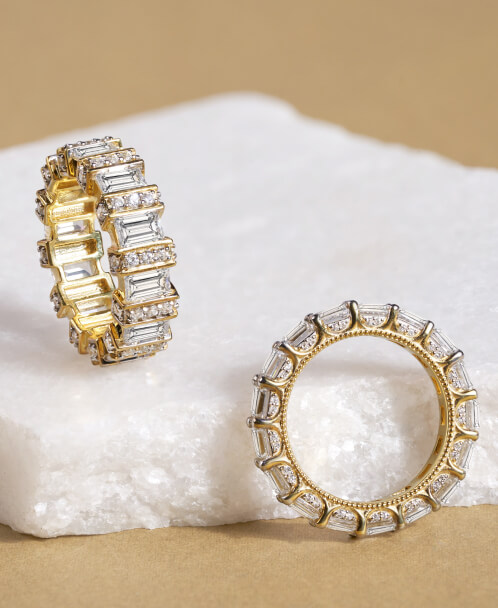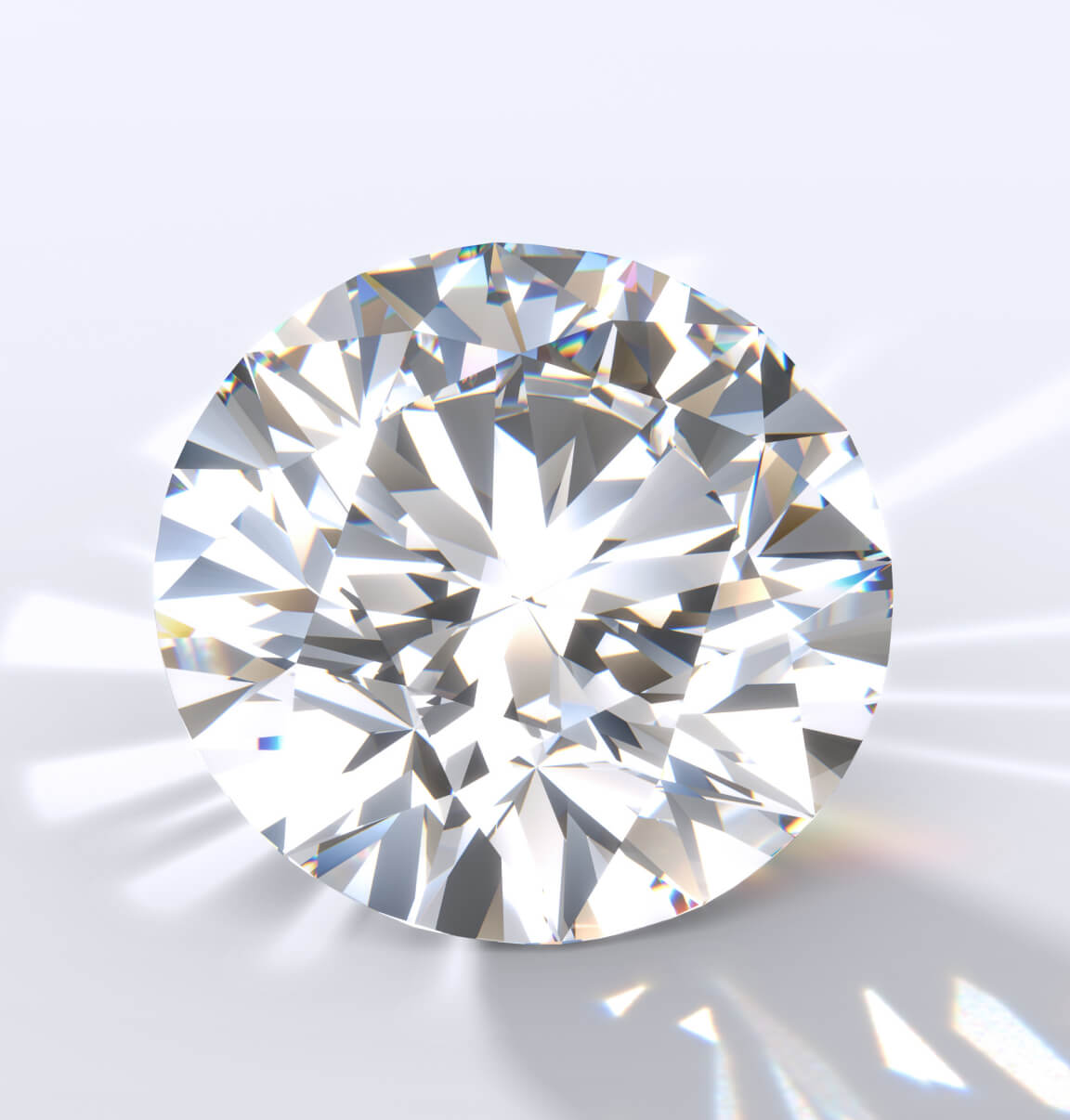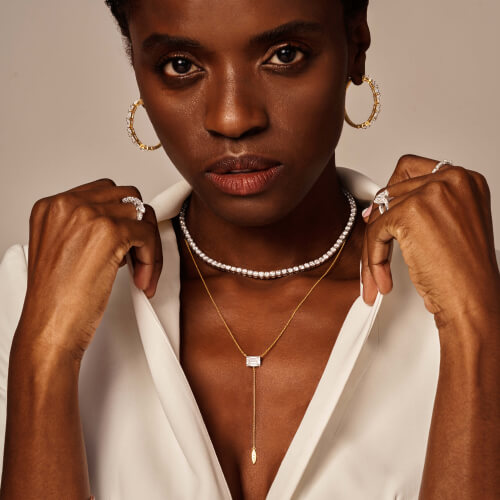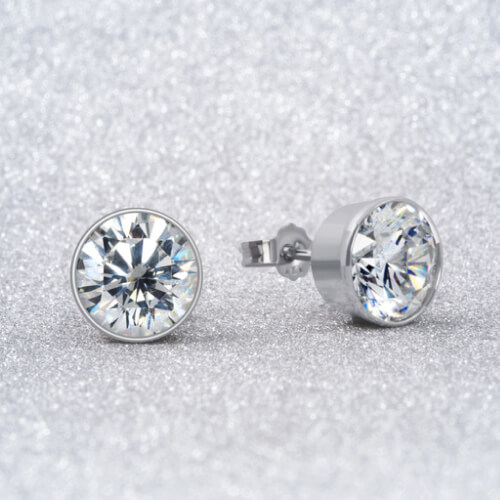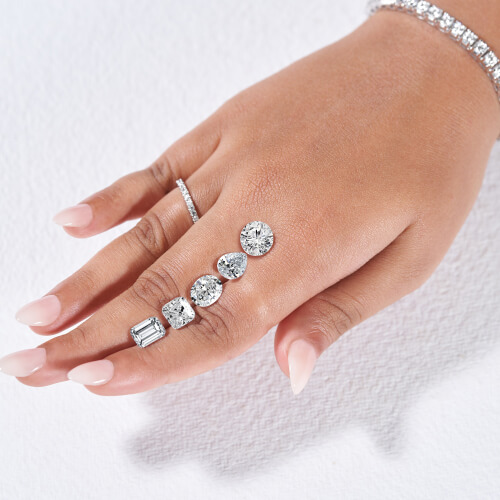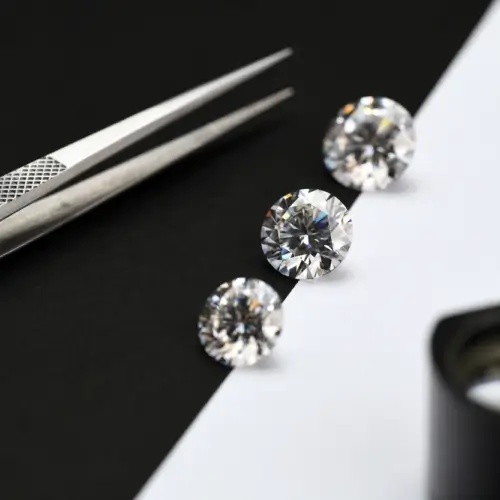Navigating the world of lab diamonds can be quite an adventure, and we are sure that your quest for the perfect gem likely involves deciphering a wealth of information. Amidst the sea of information, the 4 C’s of diamond quality rise as crucial players in decision-making.
If you made yourself familiar with the intricacies of lab diamonds, you’ve probably noticed the intimate connection between a diamond’s pricing and its clarity. While some diamonds have a whopping price tag, others come at a more reasonable cost. In all the confusion, one grade of clarity hits the sweet spot and stands out the most while capturing the hearts of many: VVS diamonds.
In this blog, let’s delve deeper into the intricacies of VVS diamonds and uncover the secrets that make them truly captivating.
Table of Content:
What are VVS Diamonds?
A VVS diamond falls third on the list of diamond clarity charts. Before that, there are Flawless and Internally Flawless diamonds, which are regarded as rare and brilliant-looking. Along with being highly radiant, they also come with a slightly higher price tag. If you are someone who is looking for luxury and sophistication at a price that doesn’t burn a deep hole in your pocket, then a VVS Diamond is the best choice for you.
VVS stands for Very, Very Slightly Included. The term ‘VVS’ is a measure of a diamond’s clarity, as it refers to the visual appearance of a diamond and its external blemishes or internal inclusions. When a diamond is of VVS clarity, it has very small inclusions that are difficult to notice even when viewed under 10x magnification.

Sometimes, VVS diamonds are also called eye-clean diamonds because you are unable to spot any blemishes or inclusions with your naked eye. On the clarity grading scale, VVS diamonds fall one step away from an internally flawless diamond. Hence, VVS diamonds, with their characteristics of having very few inclusions and blemishes, enjoy splendid-looking status.
How Do Inclusions & Blemishes Look in a VVS Diamond?
VVS diamonds have inclusions and blemishes in very minute versions. Inclusions look like pinpoints, needles, internal graining, or clouds, while blemishes are on the surface and in the form of chips, cavities, or feathers.
The Further Division of VVS Diamonds
Just like in other diamond clarity grades, the VVS diamond range is further divided into two parts: the VVS1 and the VVS2.
The VVS1 diamond ranks higher than VVS2 on the clarity chart. The inclusions in a VVS1 diamond are not visible even under 10x magnification and can only be detected if placed under a powerful microscope.
The VVS2 diamonds are graded under the second degree of the VVS clarity chart. Just like VVS1 diamonds, VVS2 are also graded on inclusions' number, size, and location.
Now, you must think about how a diamond falls under the category of VVS1. For that, graders watch for the size of inclusions; if they are larger in size and can be seen under 10x magnification, then the diamond gets categorized lower than VVS1.

Along with that, graders also look for the number of inclusions in a diamond. The more inclusions and blemishes, the lower the grade the diamond falls under. Lastly, the graders also observe where the inclusions are located. If they are found directly beneath the diamond’s table area, they will be more prominent than those present in the pavilion or crown facets.
The prime difference between VVS1 and VVS2 diamonds is that in the VVS2 diamonds, the inclusions are visible from the crown when inspected at under 10x magnification. But to the naked eye, there will be no difference between a VVS1 and a VVS2 diamond.
What to Consider When Buying VVS Diamonds?
One mistake that people make while buying a diamond is that they eye a stone that is simply too high on the grading scale. That is because they want to invest in a diamond of the highest quality, though it comes with a hefty price tag. In terms of clarity, especially when viewed by an untrained eye, there is little to no difference between an IF and a VVS diamond. Hence, opting to buy a VVS diamond is a smarter choice because it will not only come at a price that is not too heavy on your wallet but will also give you just the right amount of sparkle and fire. But there are a few things that you should keep in mind while looking for a VVS diamond.

SHOP LAB DIAMONDS
When you are looking for a diamond of a specific cut, shape, or size, it becomes important to inspect it closely. In step-cut diamonds, which have large, rectangular facets, like Asscher or emerald cut diamonds, inclusions, and blemishes appear prominently because the open facets create transparent and clear spaces that highlight the clarity and color of a diamond over its sparkle. Therefore, it is important to inspect where the inclusions or blemishes are located on such shapes of diamonds.
The last and one of the most important pieces of advice is to opt for a diamond with the clarity that you desire. Whether it’s a stone that is in the VVS range or the VS range, you should be comfortable with your purchase.
What is the Price of VVS Diamonds?
When it comes to buying a VVS diamond, you can expect it to be less expensive than diamonds of higher clarity grades. Also, if you choose to buy a lab diamond instead of a mined one, it will help you save heaps of money.
Choosing a VVS diamond from Friendly Diamonds is an easy and breezy task. Although there are other grades apart from the clarity that affects the price of a diamond, a VVS diamond of 0.50 carat starts in the $250-$300 price range. The prices vary as per the changes in the carat, color, and quality of the cut.
Since picking a lab diamond for an engagement ring or any other type of jewelry is a journey of many tiny decisions, the end result should be a jewel that invokes a feeling of admiration, sparkle, and sophistication. Thus, choosing the right clarity in lab diamonds becomes the first and foremost task. By learning in-depth about the interesting features of a VVS diamond and also focusing on how to buy one, you will surely gain insights into finding the best pick for you and your loved one.
